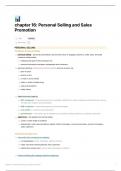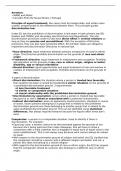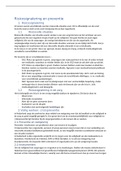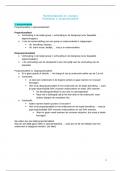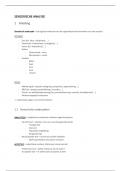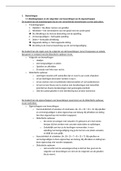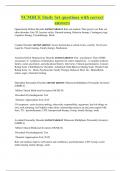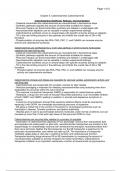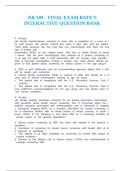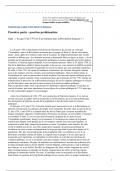chapter 16: Personal Selling and Sales
Promotion
Type Lecture
Reviewed
PERSONAL SELLING
The Nature of Personal Selling
personal selling = personal presentations by the sales force to engage customers, make sales, and build
customer-relationships
interpersonal part of the promotion mix
personal interactions between salespeople and customers
personal selling is interpersonal communication and can be done via:
face-to-face
phone or text
e-mail or social media
video or online conferencing
sales presentations
trade shows
Sales forces are used by:
B2C companies → Toyota sales person in garage, Footlocker in-store employees and behind-the-scenes:
working with retailers and wholesalers
B2B companies → advertising agency’s account manager
non-profits → museums use fundraisers
governments → US postal uses a salesperson to present mailing solutions to corporate customers
sales force = the people who do the selling
covers a wide range of positions
salespeople, sales representatives, agents, district managers, account executives, account managers,
sales engineers
The Role of the Sales Force
role varies from company to company:
no salespeople (online, catalogue, agents, brokers)
major role when working directly with customers
behind-the-scenes role (connect with wholesalers, retailers)
critical in linking the company with its customers:
chapter 16: Personal Selling and Sales Promotion 1
, representing the company to customers → finding clients, communicate information about the company’s
products
representing customers to the company → working closely with marketing to give feedback about
customer needs
coordinating marketing and sales
sales force and marketing functions should work closely together
THE PERSONAL SELLING PROCESS
Steps in the selling process
personal selling short term goal → transaction-oriented to close a specific sale with a specific customer
personal selling long term goal → to develop a mutually profitable relationships
Steps in Personal Selling Process:
1. Prospecting and Qualifying
prospecting identifies qualified potential customers
who are the right potential customers
who are the most likely to appreciate and respond to the company’s value proposition
sources of ‘leads’ can be:
referrals from customers, suppliers, dealers, non-competing salespeople, online or social media
contacts
searching in directories or online
cold-calling = dropping in unannounced via in-person visits, e-mails, calls
2. Pre-approach
a successful sale begins before the initial contact, with research and preparation
pre-approach = the process of learning as much as possible about a prospect, including needs, who
is involved in the buying, and the characteristics and styles of the buyers
objectives:
qualify the prospect = qualifying the leads = identifying interesting prospects, screening out poor
prospects ⇒
looking at financial ability, business volume, special needs, location, possibilities for growth
data analytics and AI can be used in the assessment
gather informations
make an immediate sale
approaches → personal visit, phone call, letter/email
chapter 16: Personal Selling and Sales Promotion 2


